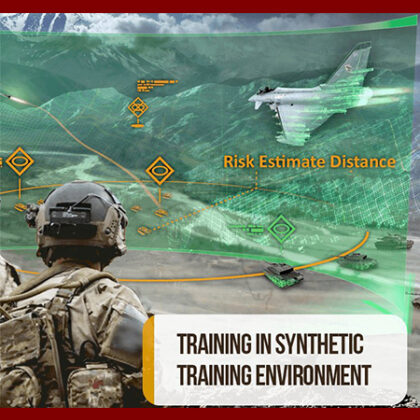
Description
Focus Area: Virtual Reality / Augmented Reality / Machine Learning
Estimated Budget Range: TBD
Submission Deadline: Wednesday, October 1st, 2025 at 12:00, ET (TBD)

SUMMARY
Virtual Reality for Next Generation Military Training: The U.S. Department of Defense seeks next-gen virtual and extended reality technologies for realistic war fighter simulation training and mission rehearsal elements, including combat environments, equipment maintenance, chemical and biological detectors, and reconnaissance. Just as flight simulators save money in terms of aircraft use and reduce risk, other virtual reality in military training applications provide similar benefits. A synthetic environment presents a huge opportunity for collective training, bringing crucial battlefield experiences without the challenges and constraints of live training and its limited warfare replication. Key is understanding the human, task, interaction, and display requirements in order to provide the appropriate information with a suitable immersive environment configuration.
Patriot Labs is interested in exploring customer and end-user opportunities requiring virtual-reality (VR), augmented-reality (AR), and mixed-reality (MR) digital products that can be applied to training military personnel. This may include simulating realistic operations in a controlled environment and the ability to deploy training exercises across a range of complex scenarios.
Requirement evaluation criteria could be based on a widely-accessible synthetic environment that supports multi-domain operations. Military and defense focused categories of interest could include advanced virtual simulations for (i) flight simulation; (ii) ground vehicle simulation; (iii) equipment familiarization training; (iv) design, optimization, and maintenance of defense equipment; (v) AI generated characters, and (vi) remote collaboration on sensitive defense projects or military missions. Requirements may include natural actions and movements with AR/VR hardware; train anytime anywhere for any situation with all-in-one VR headsets; real-like training without the risks; scalable and adaptable VR simulations; detailed 3D reviews from different viewpoints; and reduced costs for training and engineering.
Approaches sought could include support for custom operational environments; image and data fusion; flexible deployment options; multi-scenario selection; and after-action reviews. Special consideration given to requirements that support (i) accessibility to users at different physical locations; (ii) communication methods for unclassified and classified environments; and (iii) alternatives to prevent need to transmit classified information. Being able to use the data generated from simulation to provide performance insights and tailor training for individuals or groups is highly desirable.

